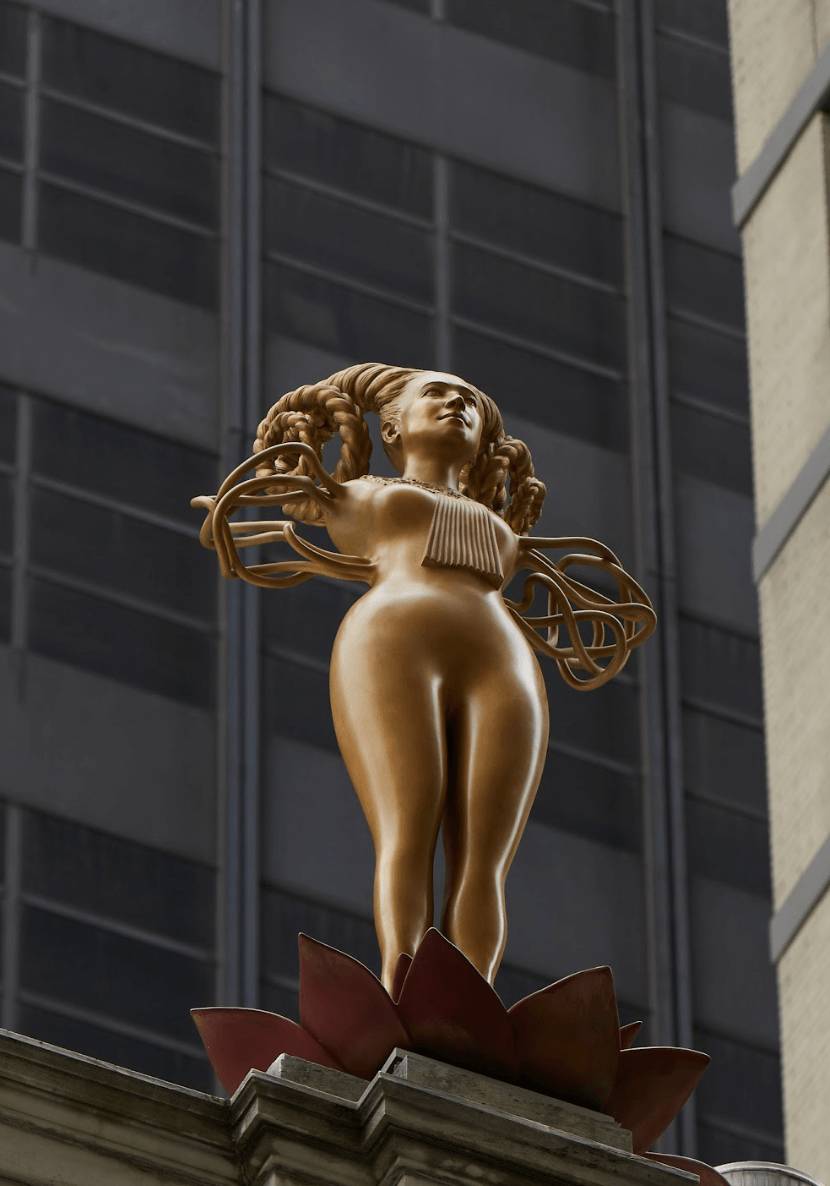This site uses cookies – Learn more.
Shahzia Sikander: Havah…to breathe, air, life
Artist Shahzia Sikander has created a major new project on the theme of women and justice for a multimedia exhibition, Havah…to breathe, air, life, in Madison Square Park and the nearby Courthouse of the Appellate Division, First Department of the Supreme Court of the State of New York. The five-month exhibition marks the first collaboration between the Conservancy and courthouse.
Across the two sites, Sikander unites female figures and motifs from nature and confronts symbols of power and justice to examine long-standing practices and attitudes impeding the advancement of women. Over centuries, throughout cultures, in literature, paintings, sculptures, and monuments, Justice has been rendered in the form of a woman, often holding scales, to symbolize the balance of power. Paradoxically, she is often blindfolded to indicate impartiality, her concealed eyes preventing clear-sightedness, eclipsing the lawgiver’s vision. In Sikander’s sculptures, the allegorical figures have their eyes wide open. Both wear a decorative jabot at the neckline, referring to the lace collar popularized by the United States Supreme Court associate justice Ruth Bader Ginsburg and the feminization of the black judicial robes traditionally worn by male justices of the court.
In Witness, a steel hoop skirt with mosaic detail adorns a golden female. The skirt form is inspired by the historic courtroom’s stained-glass ceiling dome with its leaded lines that resemble the longitudinal and latitudinal lines on a globe, a proclamation of the figure’s authority in the world. Her appendages suggest tree roots, something the artist has likened to the “self-rootedness of the female form.” Sikander states that “it can carry its roots wherever it goes.” The figure’s hair is braided to resemble two ram’s horns, identified in many traditions as symbols of strength. The mosaic is calligraphic, mapping the surface with the word “havah” in Arabic.
By opening the Snapchat app on their device, visitors scan a Snapcode to unlock Apparition (2023), an augmented reality (AR) experience that features a display of colorful particles and ghostlike images of the courthouse figure. Nearby on an adjacent lawn, Sikander’s video animation, Reckoning (2020), includes figures at once in accord and in conflict within a flowering, nurturing landscape.
On the courthouse roof, NOW rises from the base of a lotus plant, a symbol of wisdom. Sikander’s sculpture is the first female figure to be installed here among a group of nine male lawgivers including Confucius, Justinian, and Moses. Through her work, the artist addresses systems of justice and injustice by situating women in positions of power. Sikander has stated: “If we use art, media, and culture to reverse stereotypes about gender, race, immigrants, and the unfamiliar, the beliefs we pass on to future generations reflect the complex and dynamic world we live in.” NOW remains on view on the courthouse rooftop through January 2024.
“Through luminous allegorical female figures, Shahzia’s project asks who is historically represented and who wields power in the justice system, both symbolically and actually,” said Brooke Kamin Rapaport, Artistic Director and Martin Friedman Chief Curator of Madison Square Park Conservancy. “Shahzia continues to innovate artistic forms, and Havah, meaning ‘air’ or ‘atmosphere’ in Urdu and ‘Eve’ in Arabic and Hebrew, is a transformative project. The work conceptually and physically unites the park and the courthouse through dialogue amongst monumental sculptures, video animation, and AR.”
Havah…to breathe, air, life is co-commissioned by Madison Square Park Conservancy and Public Art of the University of Houston System (Public Art UHS).





















